Related Research Articles

Sir Francis Drake was an English explorer, sea captain, privateer, slave trader, naval officer, and politician. Drake is best known for his circumnavigation of the world in a single expedition, from 1577 to 1580. This included his incursion into the Pacific Ocean, until then an area of exclusive Spanish interest, and his claim to New Albion for England, an area in what is now the U.S. state of California. His expedition inaugurated an era of conflict with the Spanish on the western coast of the Americas, an area that had previously been largely unexplored by Western shipping.
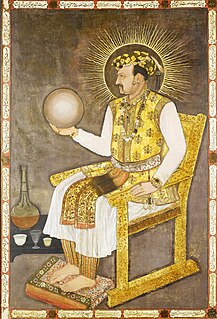
Nūr i Dīn Muḥammad Salīm, known by his imperial name, Jahāngīr, was the fourth Mughal Emperor, who ruled from 1605 until his death in 1627. His imperial name means 'conqueror of the world', 'world-conqueror' or 'world-seizer' .and was the son of Great Mughal emperor Akbar and also the successor of has father Akbar The Great

Shahab-ud-din Muhammad Khurram, better known by his regnal name, Shah Jahan, was the fifth Mughal emperor of India, and reigned from 1628 to 1658. Historian J. L. Mehta wrote that under Shah Jahan's reign, the Mughal Empire reached the peak of its glory. Although an able military commander, Shah Jahan is best remembered for his architectural achievements. His reign ushered in the golden age of Mughal architecture. Shah Jahan commissioned many monuments, the best known of which is the Taj Mahal in Agra, in which is entombed his favourite wife, Mumtaz Mahal. His relationship with Mumtaz Mahal has been heavily adapted into Indian art, literature and cinema. He owned the royal treasury and several precious stones such as the Kohinoor and has thus often been regarded as the wealthiest person in history.

Sir Thomas Roe was an English diplomat of the Elizabethan and Jacobean periods. Roe's voyages ranged from Central America to India; as ambassador, he represented England in the Mughal Empire, the Ottoman Empire, and the Holy Roman Empire. He sat in the House of Commons at various times between 1614 and 1644. Roe was an accomplished scholar and a patron of learning.

Sir John Hawkins was a pioneering English naval commander and administrator. He was also a privateer and an early promoter of English involvement in the Atlantic slave trade.

Agra Fort is a historical fort in the city of Agra in India. It was the main residence of the emperors of the Mughal Dynasty until 1638, when the capital was shifted from Agra to Delhi. Before capture by the British, the last Indian rulers to have occupied it were the Marathas. In 1983, the Agra fort was life inscribed as a UNESCO World Heritage Site. It is about 2.5 km northwest of its more famous sister monument, the Taj Mahal. The fort can be more accurately described as the walled city.

Admiral Sir Richard Hawkins was a 17th-century English seaman, explorer and privateer. He was the son of Admiral Sir John Hawkins.
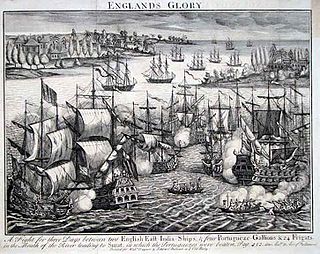
The naval Battle of Swally, also known as Battle of Suvali, took place on 29–30 November 1612 off the coast of Suvali a village near the Surat city and was a victory for four English East India Company galleons over four Portuguese galleons and 26 barks.
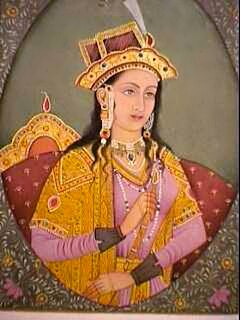
Mariam-uz-Zamani (Persian: مریم الزمانی, lit. 'Mary of the Age'; was chief consort of the third Mughal emperor, Akbar. In subsequent centuries, she has been referred to with several other names, including Jodha bai,Heer Kunwari, and Harkha Bai. She was the favorite, a very influential and most loved Queen consort of Emperor Akbar. Wali Nimat Mariam-uz-Zamani begum Sahiba was the longest-serving Hindu Empress of Mughal Empire with a tenure of forty-three years.

Amboyna, or the Cruelties of the Dutch to the English Merchants is a tragedy by John Dryden written in 1673. Its subject is the Amboyna massacre and the death of Gabriel Towerson that took place on Ambon Island in 1623. Dryden reportedly wrote the play in the short space of a month; he wanted to produce a topical piece, since England was at that time at war with the Dutch Republic. It was dedicated to Lord Clifford, a member of the Cabal.
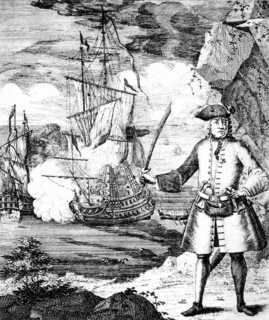
The Ganj-i-Sawai was an armed Ghanjah dhow belonging to the Mughal emperor Aurangzeb which, along with his escort Fateh Muhammed, was captured on 7 September 1695 by the English pirate Henry Every en route from present day Mocha, Yemen to Surat, India. It was built on the order of Queen Wali Nimaat Mariam-uz-Zamani, mother of Emperor Jahangir after the capture of her ship named Rahimi in the years 1613–1616.

The Battle of San Juan (1595) was a Spanish victory during the Anglo–Spanish War. This war broke out in 1585 and was fought not only in the European theatre but in Spain's American colonies. After emerging from six years of disgrace following the resounding defeat of the English Armada at Lisbon in 1589, Francis Drake embarked on a long and disastrous campaign against the Spanish Main, suffering several consecutive defeats there. On 22 November 1595 Drake and John Hawkins tried to invade San Juan, Puerto Rico with 27 ships and 2,500 men. After failing to be able to land at the Ensenada del Escambron on the eastern end of San Juan Islet, he attempted to sail into San Juan Bay with the intention of sacking the city. Unable to capture the island, following the death of his comrade, John Hawkins, Drake abandoned San Juan, and set sail for Panama where he died from disease and received a burial at sea after failing to establish an English settlement in America.
William Finch was an English merchant in the service of the East India Company (EIC). He travelled to India along with Captain Hawkins during the reign of the Mughal emperor Jehangir. The two of them attended on the emperor at the Mughal court and established trade relations between England and India. Finch subsequently explored various cities in India and left a valuable account of them in his journal, which was subsequently published.
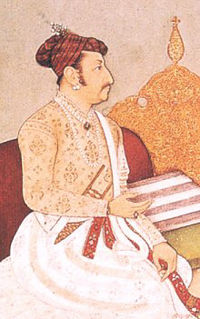
Gaj Singh Rathore was the Raja of Marwar kingdom.
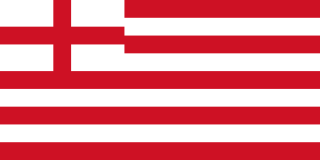
Bantam Presidency was a presidency established by the British East India Company and based at the Company factory at Bantam in Java. Founded in 1617, the Presidency exercised its authority over all the Company factories in India, including the agencies of Madras, Masulipatnam and Surat. The factors at Bantam were instrumental in founding the colony of Madraspatnam in 1639 with the Fort St. George, which later grew into the modern city of Madras. The Presidency of Bantam was twice downgraded, first in 1630 before being restored in 1634 and for the second time in 1653, when owing to the hostility of Dutch traders, the Presidency was shifted to Madras.
Alexander Sharpeigh, was an English merchant and sea-captain.
Gabriel Towerson, was a captain and agent for the East India Company.
John Jourdain, was a captain in the service of the English East India Company (EIC), and the first president of the EIC Council of India
Hushang Mirza or Hoshang Mirza was a Mughal prince and grandson of the third Mughal emperor, Akbar. He was the youngest son of Daniyal Mirza and nephew of the fourth Mughal emperor, Jahangir.
Gabriel Boughton was an East India Company (EIC) ship surgeon who travelled to India in the first half of the seventeenth century and became highly regarded by Mughal royalty.
References
- ↑ Marshall, P J (1998). Canny, Nicholas (ed.). The Oxford History of the British Empire, Vol 1: The Origins of Empire, British Overseas Enterprise to the Close of the Seventeenth Century . Oxford University Press. p. 272. ISBN 0-19-820562-7.
- ↑ Wilbur, Marguerite Eyer (1945). The East India Company: And the British Empire in the Far East. Stanford University Press. p. 46. ISBN 978-0-8047-2864-5.
- ↑ McJannet, L.; Andrea, Bernadette (2011). Early Modern England and Islamic Worlds. Palgrave Macmillan US. p. 96. ISBN 978-0-230-11982-6.
- ↑ McJannet, L.; Andrea, Bernadette (2011). Early Modern England and Islamic Worlds. Palgrave Macmillan US. pp. 96–98. ISBN 978-0-230-11982-6.
- Attribution
![]() This article incorporates text from a publication now in the public domain : "Hawkins, William (fl.1595)". Dictionary of National Biography . London: Smith, Elder & Co. 1885–1900.
This article incorporates text from a publication now in the public domain : "Hawkins, William (fl.1595)". Dictionary of National Biography . London: Smith, Elder & Co. 1885–1900.